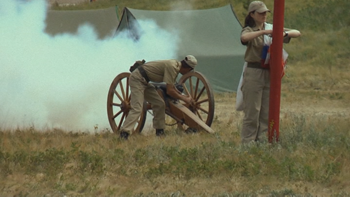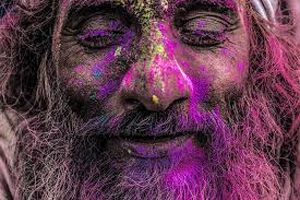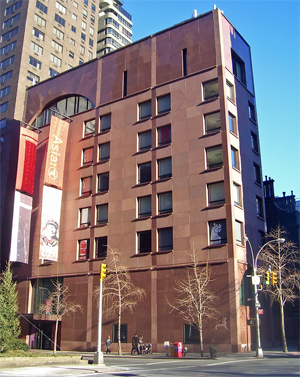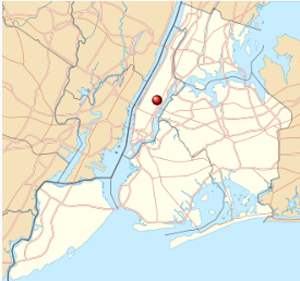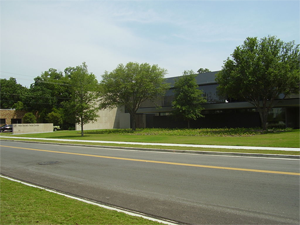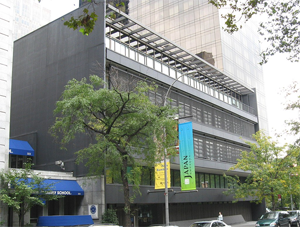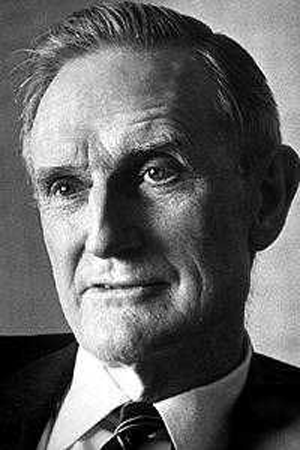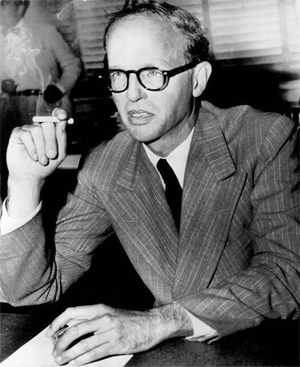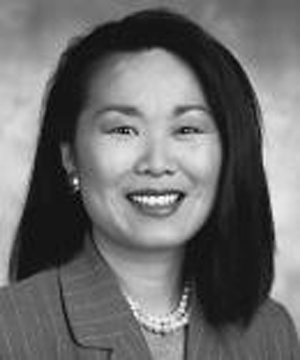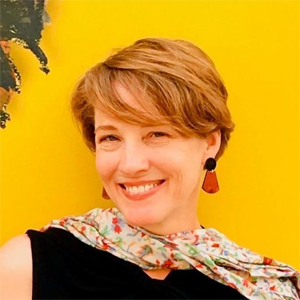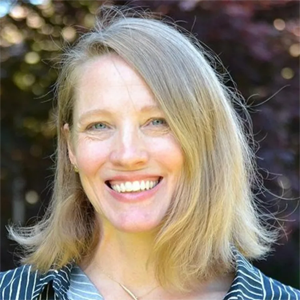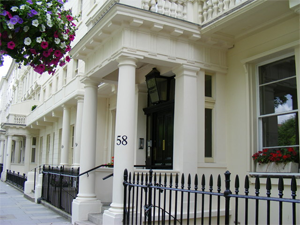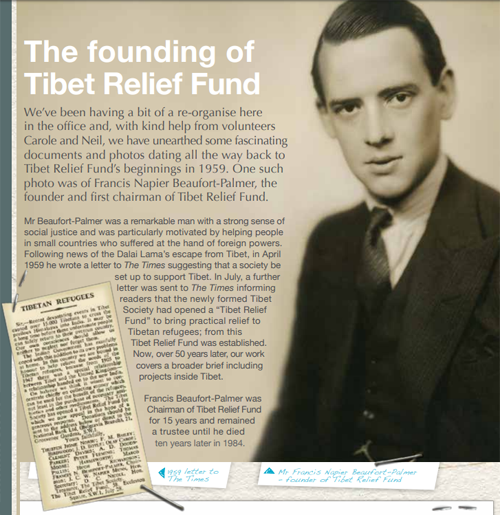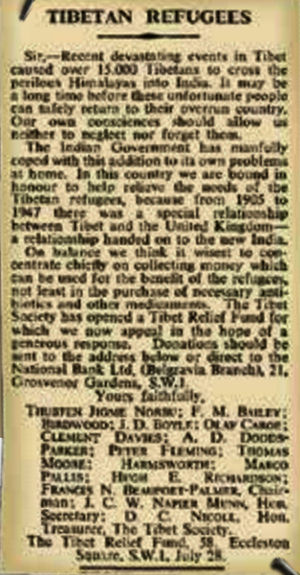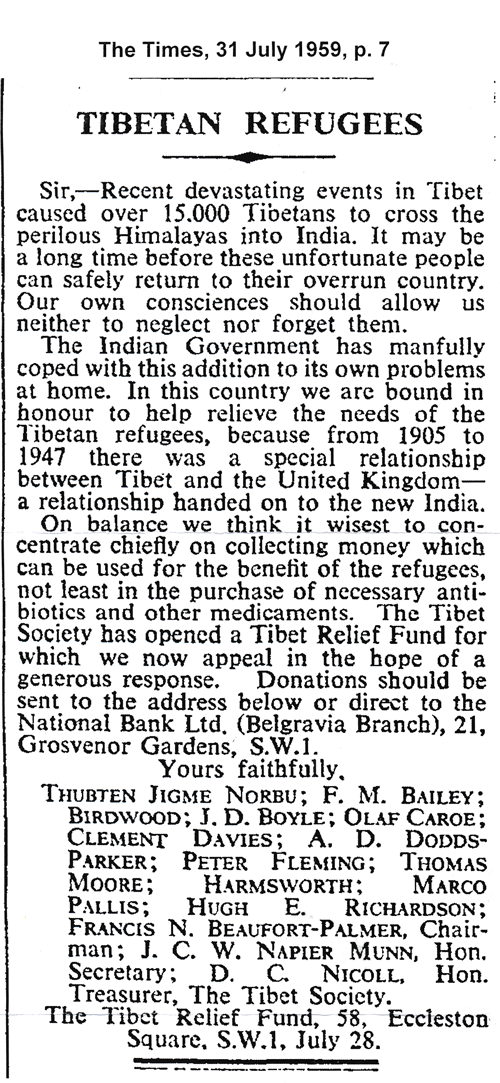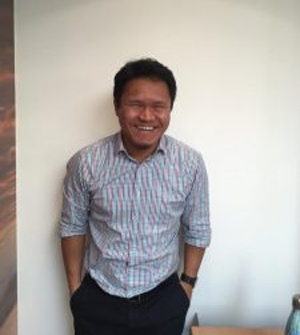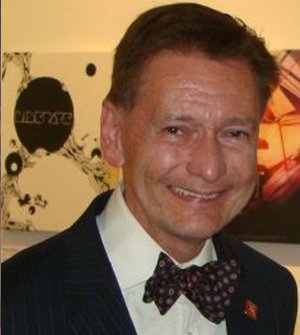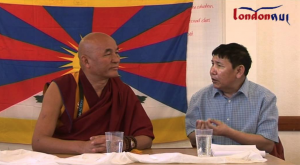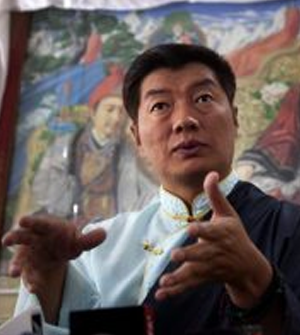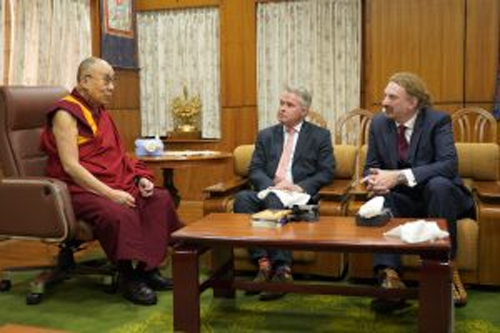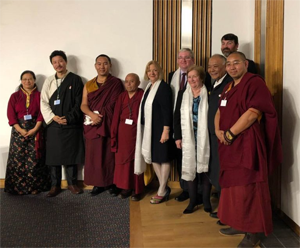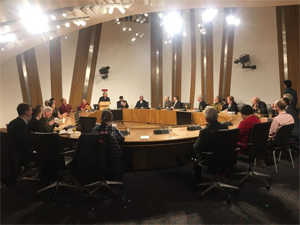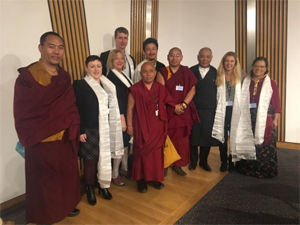by J.N. Farquhar, M.A., D. Litt. (Oxon.).
Professor of Comparative Religion in the University of Manchester
NOTICE: THIS WORK MAY BE PROTECTED BY COPYRIGHT
YOU ARE REQUIRED TO READ THE COPYRIGHT NOTICE AT THIS LINK BEFORE YOU READ THE FOLLOWING WORK, THAT IS AVAILABLE SOLELY FOR PRIVATE STUDY, SCHOLARSHIP OR RESEARCH PURSUANT TO 17 U.S.C. SECTION 107 AND 108. IN THE EVENT THAT THE LIBRARY DETERMINES THAT UNLAWFUL COPYING OF THIS WORK HAS OCCURRED, THE LIBRARY HAS THE RIGHT TO BLOCK THE I.P. ADDRESS AT WHICH THE UNLAWFUL COPYING APPEARED TO HAVE OCCURRED. THANK YOU FOR RESPECTING THE RIGHTS OF COPYRIGHT OWNERS.
I.
MONASTICISM, the system which sets men and women apart from ordinary life, in order that they may live in celibacy and poverty, and devote their whole time and energy to the highest ends of religion, is something which we can all understand and appreciate, whatever our judgment as to the final value of the practice may be; but when we hear of members of some monastic order taking to arms and fighting, we hardly know what to make of the information. How can the life of complete self-dedication to religion square with war, terror, bloodshed and death? How can the monk have ever been to become a soldier? -- The answer is that in most cases, religious war has been the exciting cause. When people of one faith have attacked people who held another, with some sort of religious or semi-religious end in view, then monks, though dedicated to an exclusively religious life, have, in most cases, felt it was time to take up the sword in defence of their fellow-believers. When, under the early Caliphs, the armies of Islam attacked the eastern provinces of the Byzantine Empire, we read that, at a number of points, Christian monks went out with banners and arms to oppose them. Muslim ascetics have, however, frequently taken up the sword, even when they were not threatened by religious war, and the same seems to be true of certain groups of Indian ascetics.
The mediaeval movement in which the three great orders of monastic knighthood arose -- the Knights of St. John of Jerusalem, the Knights Templars and the Teutonic Knights [2] -- was inspired by the desire to protect Christian pilgrims and invalids from Muslim violence; but thereafter the knights proceeded to play for some two centuries a great part in the political and military struggle between Europe and Islam. Similarly, in Spain, the orders of St. James of Compostella, Alcantara and Calatrava, were all founded as military religious orders to fight the Moors of Spain [3] Even to-day in those parts of the Near East where conditions are constantly disturbed, you may see the Christian monk shouldering his musket or any other weapon he can get to defend his monastery. [4]
Sufism, as Muslim Mysticism is called, sprang from the religious experience of Muhammad, on the one hand, and from Christian mysticism, [5] on the other; while early Muslim asceticism is almost entirely a reflex of the life of the Christian monk of the seventh century. Muslim mystics, whether householders or vowed ascetics, are called Sufis; [6] while ascetics are called Faqirs [7] or Dervishes, [8] faqir being Arabic, while dervish is Persian. The only word used in India for a Muslim ascetic is faqir. These ascetics are organised in orders, each dependent on an ancient historical founder and controlled by a living head. [9] Like the Christian monk of the seventh century, the faqir took to fighting in the religious wars. We hear of them in the early struggles and in most of the later wars. [10] In most Islamic countries of the East to-day, you meet the faqir carrying a spear or heavy axe.' [11] Sheikh Said, the leader of the Kurds who have rebelled against the modern Turkish Government, is the head of one of the most famous Dervish orders, the Nakshbandis, [8] so that, doubtless, many of his fighting followers are faqirs.
It is very remarkable that, although Buddhist teaching is of a deeply quietist character, yet one great order of Buddhist monks in medieval Japan developed into a military force and played a considerable part in the politics and wars of their time. [12]
II.
I expect most students of history know about the Christian military orders and have also heard something about the fighting prowess of Muslim faqirs; but to most of us the ascetics of India seem to stand by themselves. We think of them as the supreme penitents of the world. This side of Hinduism is usually thought to be, beyond other forms of religious life, characterised by otherworldliness, by a supreme contempt for the pleasures, comforts and shows of the world. The idea of Hindu monks becoming fighting men seems grotesquely absurd.
If you dip into the great books on the history of India, you will find scarcely a hint that such a thing ever happened; [13] most students have never heard of the facts; and even in the latest and greatest books on Hinduism, there is scarcely a reference to its monastic warriors. I should have known little or nothing about this very significant aspect of Indian history, had I not been driven to investigate the present-day organisation of certain orders of Hindu ascetics: only when I got to understand the history of the fighting did the problem become soluble.
There is a sort of faint prophecy of all this strange history found at a very early date in India. It was probably about seven hundred years before Christ, but possibly earlier, that groups of Hindu householders began the practice of giving up the life of the village and the town to devote their whole time to religion in the quiet and peace of the forest. Those who entered on this life were called Vanaprasthas, forest-dwellers, hermits, but their practice cannot be called ascetic. It was rather puritan than ascetic. Celibacy was not necessary. A man usually took his wife with him to the forest, and children were often born in the hermitages. The chief end these men had in view was to escape from the toil and bustle and worry of ordinary life, and to devote their whole attention to religious thought and practice. The hermit gave up his profession and every form of work; he did not even sow and reap. He was forbidden to enter a village or to step on ploughed land. His sole interest was religion. He therefore went to the forest and built a rude hut, and laid up in it a store of grain for food. Usually a number of huts were built near each other, and thus formed a hermitage. As there were many wild beasts in the forest in those early days, and also many wild men, the hermits crowded together for safety.
When a king or prince or courtier was driven into exile, the custom was to retire to the forest and live as a hermit until some change in the political situation should give him the chance of returning.] Thus the Ramayana tells us that when, through the scheming of one of his wives, Dasaratha, the king of Ayodhyi, was persuaded to send his son Rama into exile, Rama with his wife, Sita, and his brother, Lakshman, withdrew to the forest to the south of the Jumna, and there lived as hermits; and there is a episode in the life of the Pandavas in the Mahabharata. In the case of a king, prince or noble, the exile took his arms with him to the forest, and used them to keep off wild beasts and hostile men, and also to kill the deer of the forest for food; but the ordinary hermit had no arms. This then is the faint early prophecy of the great history of later days which we have to study.
In those days Hindus of the highest castes still ate flesh. But in later centuries animal sacrifice and the eating of flesh were denounced as cruel in that they led to the destruction of animal life. Hence the saving of animal life became an ideal, and a rule arose that no hermit in the forest should kill an animal: it was thought inconsistent with his religious life. This is the famous rule of ahimsa, [14] harmlessness.
When hermits had learned to practise this rule, the animals of the forest gradually realised, in the neighbourhood of a hermitage, that they were perfectly safe from attack, and became absolutely tame, completely free from fear of man. In early Indian poetry one finds many descriptions of these scenes of peace and friendship in the forest. [15] In the course of the first attempt to climb Mount Everest, when the explorers had come within a few marches of the great mountain, they found many places where beasts and birds were exceedingly tame, quite untouched by fear of man. The Buddhist monks on the mountains still practise ahimsa.
III.
One of the greatest of all the changes that mark the history of Hinduism is the rise of the doctrine of transmigration and karma, the central idea of which is that every soul passes through innumerable lives, in each life enjoying or suffering just recompense for the deeds done in its previous life. Now all Hindus accepted this doctrine; but, while the ordinary man accepted it with equanimity, quite pleased to look forward to another life, thinking men hated the prospect and regarded it as intolerable to be unceasingly driven through the round of birth and death. Hence they began to look about for some means of escape from this dreadful fate. They sought for Release from Transmigration.
Now every form of asceticism, Hindu, Buddhist or Jain, which arose in ancient India, was meant to secure this inexpressibly precious boon; and men who were determined to achieve Release became ascetics, because it was felt that no one could escape from rebirth, unless he had completely subdued his passions and all the natural tendencies of the human personality to love life and the world and its joys. Indian asceticism has thus for its one aim the complete expulsion of love of all things worldly from the soul. How incredible then, at first sight, it is that any Indian ascetic should take to fighting! Further, every ascetic takes the vow of ahimsa, i.e. harmlessness, the vow not to destroy life in any form: how then can the Indian ascetic become a warrior?
The earliest of all the ascetic orders of India is the famous Hindu order, the sannyasis or renouncers, so named because their faith and their practice equally required that they should renounce everything worldly. The order came into being, in all probability, about 600 B.C. The belief which created the movement is that the human soul is identical with the Supreme; and the original teaching of the school is found in the early Upanishads. [16]
Rather later arose Jainism and Buddhism, each with its order of monks intent on Release.
We now leave those early days of the sixth century B.C. and come down to a time about the Christian era. In the interval the mass of the Hindu people had learned to worship the gods by means of temple and image; and in the centres of population artistic temples were being erected, each dedicated to one of the chief divinities of the Hindu pantheon.
The most noticeable result of this new worship was the rise of sects within Hinduism. Each god had his own special worshippers who preferred him to all the other gods; and, as they became organised for his worship and everything connected therewith, they became a sect.
By far the greatest of the sects of these early days were the sect which still worships Siva and the sect which still worships Vishnu. Each sect had its own group of monastic devotees.
We take the sect of Siva first. At this early date, about the Christian era, the monks of Siva practised yoga, "restraint," i.e. a series of exercises, partly mental, partly physical, meant to still the mind and to help the man to escape from the influence of the world and to understand spiritual things. Hence those ascetics who were devoted to Siva and practised yoga were called yogis, "restraint men."
The sect of Vishnu had its ascetics also. As they also sought to conquer the worldly passions of the human heart and to become spiritual men, they were called vairagis, passionless men."
IV.
We may now consider how the various groups of ascetics became transformed into fighting men.
A. We begin with the devotees of Siva, who, we have seen, were called yogis. Some of these yogis worshipped the fierce form of Siva called Bhairava, i.e. the Terrifier. In his images, he has a red skin, matted hair, four arms and three eyes, the third eye set vertically in the middle of his forehead. In one hand he carries a sword, in another a cup of liquor. He is stark naked, wearing only a garland of human skulls hanging from his neck, an emblem of the human sacrifices in which he delights. [17]
Now to imitate one's god is one of the commonest of religious impulses; so the yogis who adored Bhairava got themselves up so as to be as like the god as possible. The yogi went naked, had his hair in a great matted cone on the top of his head, carried a sword in one hand and a cup of liquor in the other, and, if possible, he also wore a garland of human skulls hanging from his neck. They frequently used a human skull as a drinking vessel. The sword was used for slaying the victims of sacrifice, whether animal or human, and also played a great part in some of their magic rites. In one of the most famous of Indian dramas, the Malati-Madhava of Bhavabhuti (c. 700 A.D.), the heroine is on the point of being slain in a temple as a sacrifice to the fierce goddess Chamunda, by a yogi, when the hero arrives, kills the yogi and saves the lady he loves. [18]
In one of the romantic histories found in Sanskrit literature, Ba~a's Harsha-charita, [19] the life-story of the emperor Harsha, we learn how these yogis became soldiers. King Pushpabhuti meets a learned yogi named Bhairavacharya, i.e. Priest of Bhairava, and becomes his friend. This ascetic scholar kills a man, and, by the might of a weird magic rite performed on the corpse, he enables the king, in a midnight encounter, to conquer and subdue to his will an unearthly spirit of great power called Srikantha. Thereafter, two yogis, disciples of Bhairavacharya, who had borne arms along with the king in the night battle and are described as "men of a warlike spirit," enter the royal bodyguard to spend the rest of their lives fighting for the king. The romance belongs to the seventh century A.D.; and we thus see that at that early date it was already customary for these yogis to hire themselves out as soldiers. Here there is no religious war to account for the transformation of the monk into a fighting man.
At later dates we find many references to yogi warriors, especially in the chronicles of Rajputana. [20] Clearly each Rajput chief was glad to gather round him a bodyguard of these men; and many a chief hired large numbers of them, so that they formed a considerable element in his army. They seem to have usually gone naked, thus keeping up their allegiance to the naked god Bhairava. While most of our references to yogi warriors in the early centuries relate to Rajputana, it is clear that in later centuries they were common in many parts of the north. [21]
Besides sword, spear, bow, and arrow, these yogis carried steel discs, which they threw with deadly effect. The discus made of thin steel was an ancient Indian weapon, and was called Chakra, i.e. wheel. They were made with a saw-edge, and each was but a narrow circlet of steel, so that the warrior could pass six or eight of them over his head and wear them like a ruff round his neck. We are told that they could throw a disc with so much force as almost to cut a man in two.
But fighting yogis did not always become the hired soldiers of a recognised king. They frequently gathered in great companies, when the country was in an unsettled condition, and went out to fight in their own interests. They would seize a piece of valuable land, settle down on it, and live by agriculture and trade; but they retained their arms and were quite ready to use them if any one tried to dispossess them. Many of them made considerable fortunes. It is hardly likely that in those circumstances their vow of celibacy was very much respected. An excellent example of this type of settlement is found in the case of a yogi king who, about 1500 A.D., had his lands in Western India and kept a considerable army of yogis. Once in three or four years some three thousand of these warriors went out on pilgrimage and laid the whole country under contribution. [22] Anquetil du Perron, the French scholar who went to India about 1760 A.D. and brought to Europe the earliest trustworthy information about the Zoroastrian religion, describes a rich yogi who lived stark naked near Surat. He had great influence and did a very large trade in precious stones; so that he kept up correspondence with every part of Asia. [22]
One of the most notable religious leaders of India about 1500 A.D. was Kabir. In his system Hinduism and Islam mingle. Nanak, who founded the religion of the Sikhs, is only one of a number of teachers who drew their inspiration from him. Kabir vigorously condemned both idolatory and caste; and he had great influence all over North India. In the Bijak, a volume of his religious verse, there is a poem which pictures the fighting yogi and his irregularities very vividly:-- [23]
1. O brother, never have I seen yogi like this: puffed up with pride he walks, caring for nothing.
2. He teaches the religion of Mahadeva (i.e. Siva) and therefore is called a Mahant.
3. In market and street he sits in the posture of a yogi; he is an imperfect Siddha (saint) a lover of Maya (the illusion of the world).
4. When did Dattatreya [24] attack his enemies? when did Sukadeva [24] lay a cannon?
5. When did Narada [24] fire a gun, or Vyasadeva [24] sound a horn?
6. They who fight are of little wisdom; shall I call such men ascetics or bandits?
But how was it possible for these irresponsible companies of ascetic warriors to wander about in this way, at their own sweet will, killing people, stealing their property and their children and committing all sort of excesses? -- One part of the reason is to be found in this, that for some centuries there was no Imperial power in North India. The country was cut up into a great number of independent kingdoms, big and little, and no one felt responsible for the general peace and welfare of the country. So long as a roving band of yogis did not attack the interests of a king or chieftain powerful enough to cut them to pieces, they were free to continue their plundering and murderous pilgrimages.
But the chief reason for the immunity from punishment which fighting ascetics enjoyed in North India for a thousand years is to be found in their religious status. Since they were initiated ascetics, recognised devotees and servants of one of the Hindu gods, they could not be tried for murder by any Hindu king. They did not come within the ambit of the law. Only the guru of the ascetic could punish him. Necessarily the ordinary Hindu was afraid to touch one of these men: there was no saying what sort of supernatural vengeance he might wreak upon him. Their consecrated position thus effectively protected them from civil process and also from popular reprisal.
B. We now turn our attention to the end of the twelfth century, when the great Muhammadan army of invaders from Western Afghanistan crossed the Indus, and within a few years conquered a very large part of North India. From 1200 A.D. the bulk of the north was ruled by a Muhammadan empire.
I had better interject at this point a yogi custom which expresses rather a noble spirit. After the conquest had taken place, one might meet in North India, bands of yogis, each with several lengths of heavy iron chain hanging from his shoulders and trailing on the ground behind him. It was a symbolical act, meant to express their overwhelming shame at the enslavement of their country by foreigners. [25]
The writer does not know whether fighting faqirs formed part of the army which invaded India or not. In any case, after the conquest, great numbers of Muslim adventurers of many types came into North India; and among them religious teachers and faqirs in great numbers. From a date not later than 1500 A.D., we have plenty of information to show that faqirs wandered about, taking part in any fighting that was to be done, and also murdering, plundering and seizing lands. Here is how Tavernier, the well-known French traveller of the seventeenth century, describes a company of them which he met:-
"The following day I had another experience, which was a meeting I had with a party of Faqirs, or Muhammadan Dervishes. I counted fifty-seven of them. . . . The only garment of the five leaders consisted of three or four ell of orange-coloured cotton cloth. . . . Each of them had also a skin of a tiger upon the shoulders which was tied under the chin. They had eight fine horses, saddled and bridled, led by hand before them, three of which had bridles of gold, and the five others had bridles of silver, and the saddles also covered with plates of silver and a leopard skin on each. The other dervishes had for their sole garment a cord, which served as a waistband, to which there was attached a small scrap of calico, to cover the parts which should be concealed. They were all well armed, the majority with bows and arrows, some with muskets, and the remainder with short pikes, and a kind of weapon which we have not got in Europe. [26] (He refers to the disc which we have already described.)
Since the government of North India was then in Muslim hands, these Muslim ascetics were shielded from popular reprisal and from civil process by their sacred character. So long as they did not assail the government, they did what they liked with impunity.
By 1500 A.D., it is evident that there were immense numbers of armed faqirs and yogis wandering about in North India, and far down the west coast. Faria [27] speaks of yogis, and also Kalandars, i.e. faqirs of the Qalandar [28] order, moving about in the Konkan in bands of 2000 or more, forcing the people to give them what they wanted; and Varthema [29] tells of a yogi king out on a raid with 3000 followers as far south as Calicut. We must take these facts as proof that hordes of ascetics warriors marched far south along the west coast on plundering expeditions; but it is important to notice that the enlisting of ascetics as soldiers never infected to any extent the monastic orders of South India. [30] The movement arose and spread and lived for centuries in the great northern area, where the Muslim government was struggling to maintain its supremacy and where in the latter half of the eighteenth century, it succumbed to the British.
C. We now turn to another group of Hindu monks. At the beginning of this article we saw how the most respected and most cultured order of ascetics, viz., the sannyasis, came into existence. By the sixteenth century they were found in large numbers in most parts of India, and they were specially numerous in the central part of North India, that section which contains the great cities, Benares, Allahabad, Agra, and Delhi.
For many centuries only Brahmans were initiated as sannyasis; and even in the case of Brahmans care was taken to accept only men of some education and some philosophic interest. They were expected to study the chief texts of the Vedanta and to spend some part of their time in thoughtful meditation. A certain percentage of them proved fine scholars and wrote philosophic works of distinction. They have always been the most illustrious Hindu ascetics. In the sixteenth century they dressed, as they do to-day, in long saffron robes, and each man carried a single bamboo rod, danda, to indicate that he belonged to the ekadandi, [31] one-rod division, of the sannyasi order. They were divided, as they are to-day, into ten sub-divisions, viz.: 1. Tirtha, 2. Asrama, 3. Sarasvati, 4. Bharati, 5. Vana, 6. Aranya, 7. Parvata, 8. Sagara, 9. Giri, 10. Puri; and each man received a name which included the name of the sub-order to which he belonged. Thus Madhusudana Sarasvati belonged to the third sub-order, the Sarasvati.
Naturally, the armed faqirs, as they roamed about, found it very good sport to kill sannyasis. A group of these Hindu scholars would go down to the Ganges to bathe in the morning, when a company of faqirs would suddenly appear and kill them all. We can readily understand the indignation of the sannyasi order and of the whole Hindu community when those highly respected men were murdered in this brutal and cowardly fashion. To the faqirs, as good Muslims, to kill those idolatrous infidels seemed to be the right thing to do; and the ordinary Muslim official would quite sympathise with them.
But Akbar was then on the Imperial throne, and he had already given his Hindu subjects a number of notable privileges. There were numerous Hindus who occupied high office in the government and in the army. Among all his courtiers the favourite seems to have been the cultured Hindu, Raja Birbal. There had been no such Muslim emperor in India before.
At that time there lived in Benares a well-known sannyasi scholar called Madhusudana Sarasvati. His books are well known to Sanskrit scholars to-day. He decided to try to persuade Akbar to do something to save sannyasis from these outrages. He therefore went to court and had an audience with the Emperor. Raja Birbal, as a trusted adviser on Hindu questions, was present at the interview. Madhusudana stated the grave danger in which sannyasis stood, since they were themselves defenceless, while there was no possibility of getting their enemies punished by law. Raja Birbal then suggested that Madhusudana should initiate large numbers of men of non-Brahman caste as sannyasis and arm them, so that they might be ready at all times to defend Brahman sannyasis from attack. The Emperor agreed to the proposal and promised that fighting sannyasis should be immune from prosecution, precisely like faqirs. I am inclined to date the interview about 1565 A.D.
The condition in which we find the sannyasis to-day shews us clearly what steps Madhusudana took to carry out the plan. He found thousands of Hindus of Kshatriya and Vaisya caste who were willing to become fighting men. These he initiated as sannyasis, so that they became full members of the order; but, since for some twelve or thirteen centuries it had been recognised as the law that only Brahmans should be initiated, their initiation was held to be irregular. The sub-orders into which they were brought are numbers 4 to 10, [32] and these sub-orders as they exist in North India have therefore been recognised as "impure" [33] ever since those days.
Readers will not find this agreement between Akbar and Madhusudana Sarasvati mentioned in any historical work. So far as I know, it has not been recorded anywhere. I picked up the information from the lips of sannyasis, who told it me to explain how large numbers of their order came to be fighting men. But, though it has come down to us only by tradition, there can be no doubt about its truth. All sannyasis in North India hold the tradition; and we may also be certain that the Emperor who had given the Hindu an equal place with the Muslim in his-empire would at once recognise the justice of Madhusudana's appeal and would respond to it. But there is also an incident recorded in the Emperor's life, which fits so well into the tradition that I am sure every historical mind will at once acknowledge that it ought to be accepted as full corroboration of the story.
The incident is described by Abul Fazl and other historical writers. Akbar was in camp at Thaneswar, north of Delhi, early in 1567 A.D. News was brought to him that two companies of armed sannyasis, Giris and Puris, [34] who had quarrelled about the possession of the gifts in the shrine of Thaneswar, were about to have a fight. Like the keen soldier he was, he at once went to witness the encounter. When he arrived, he found that the Puris were outnumbered by the Giris, and he therefore ordered some of his own men to join the weaker side and redress the balance. The battle was fought, and the Puris were victorious. In this fight some twenty men were killed. We are told that the emperor greatly enjoyed the spectacle. [35] Since he had agreed to their organisation, in order that they might fight Muslim foes, he must have chuckled inwardly to see them turn their swords against each other.
It seems passing strange at first sight that an enlightened man like Akbar should tolerate such things in his empire instead of strengthening the law to deal vigorously with all breakers of the peace! Yet he acted in harmony with the ideas of the times. It would not seem strange to sixteenth-century India that the Emperor should stand by and see a fight in which twenty men were done to death. It did not shock India of the sixteenth century, any more than duelling shocked England in the eighteenth century.
We thus conclude that, about 1565, large numbers of non-Brahmans [36] were initiated as sannyasis and armed to fight Muslim faqirs. From this time onward for two and a half centuries we have abundance of information about their activity. There were immense numbers of fighting sannyasis. They went naked, like other fighting ascetics. [37]
Like yogis, these fighting sannyasis were called Gosains (Sanskrit Gosvami) and also Nagas, to distinguish them from the real sannyasis, who were still busy with philosophy.
No doubt these men soon gave a good account of themselves as soldiers. Evidence of their fine fighting qualities will be given towards the end of this paper. But within a few decades, like the faqirs and the yogis, large numbers of them took to fighting on their own account and to a domestic life and trade, on lands which they had seized.
Tukaram, a famous Maratha poet, who flourished about 1640 A.D., follows Kabir in expressing a very healthy scorn for some of these men:--
Brother, we have become a Gosain and abandoned everything:
Patel -- build us here a chapel; bring bhang and tobacco in plenty;
Provide daily food for me, and send a sister to serve me.
Tuka said that such devotion resembled a mask worn at the Holi. [38]
--Holi, India's EPIC Color Festival - Vrindivan, India
D. We have thus far learned how the yogis and the sannyasis became fighting men. We now turn to the devotees of Vishnu, who are called vairagis, passionless men, in the vernacular bairagis. Probably shortly after the time when Madhusudana organised great numbers of fighting sannyasis, the movement spread to bairagis. [39] I think we may with safety conclude that by 1600 A.D. many of these had become armed also. The movement probably began with the Ramanandi sect, which by this date was already very large; but Vishnusvamis, [40] Nimbarkas and Vallabhacharyas [41] also took to fighting. These bhairagi warriors soon became very numerous, almost as numerous as the armed sannyasis.
E. We have already heard of Kabir, the man who opposed idolatry and caste and mingled Hindu and Muslim ideas in his system. Apart from his own immediate followers, who are called Kabirpanthis, a number of other sects, large and small, arose from his influence. We have also seen Kabir's scorn for the yogi who carries arms, seizes lands and lives no celibate life. In spite of that biting satire, many members of the sects which sprang from his teaching took up arms. So overpowering was the urge towards fighting in those days.
Ascetics belonging to these groups are called sadhus, the generic name for ascetics to-day. The most notable of these sects who took up arms were the Satnamis, the Dadupanthis and the Sikhs; and the change in all three cases seems to have come in the seventeenth century.
Of all these groups the Sikhs are the most interesting. Throughout the sixteenth century they were a pious Puritan community, drawn almost entirely from the peasantry of the Punjaub and eager only to live at peace with every one. During the reign of Akbar, 1556-1605 A.D., there was peace between the Mogul empire and the Sikhs; but immediately thereafter, suspicion and treachery arose, and there was frequent trouble. Finally under the tenth Guru, Govind Singh (1676-1708), relations became so seriously strained that the Guru created an order of fighting ascetics, the Akalis, i.e. the Immortals, and many men belonging to the older groups of ascetics among the Sikhs (especially the Udasis) also took to arms. Hence the Sikh church practically became an army. Still later, under Ranjit Singh, early in the nineteenth century, the Sikhs ruled the Punjaub; and they finally fought two stubborn wars with the British before they would consent to give up aggressive war.
All the fighting groups had a good deal in common. They all went naked, or next to naked, and were therefore called nagas, "naked men." A very large number of them used hemp drugs, and the yogis drank strong drink freely. Their weapons were bow and arrow, sword, spear and shield, chakras, and now and then firearms. Before they went into battle, they painted their faces and their bodies, so as to give them a fearsome appearance; and they raised most unearthly yells as they rushed to the charge. Many of them cultivated beards with projecting whiskers to make them look still more frightful.
All these fresh groups of armed ascetics frequently fought on their own account, seized lands and settled down to trading, agriculture and money-lending. There is evidence that large numbers of all the fighting groups formed settlements of this nature. Traces are found of them in nearly all parts of North India. In many cases monasteries were built on the lands thus seized, and an attempt was made to continue the ascetic life. They recruited their numbers by buying or stealing, during their raids, the healthiest children they could find.
But though a considerable proportion remained celibate, vast numbers married and formed families. They thus became very like the ordinary Hindu householder. But one noticeable point of difference remained. In becoming ascetics they had lost their caste status. Thus, although they had become householders, they could not return to their old castes. The result was that each local group gradually developed into a new caste, the yogis forming the Yogi caste, the sannyasis the Sannyasi or the Gosain caste, and the bhairagis the Bairagi or the Vaishnava caste. Thus in most Gazetteers from Assam to the Punjaub, and south as far as Central India and the Marathaa country, these castes are noticed. Within the Sannyasi caste, each family is usually called by the name of the sub-order to which it belonged, whether Bharati, Puri or what not. There are many of these irregular Sannyasi families to be found in Nepal also. The men may marry or remain celibate as they please; but, married or single, they are usually employed as ministrants in Saiva temples. Men of the same type perform a similar function in Assam, and in some other parts of India. [42]
These agricultural and mercantile settlements usually prospered. Most men made a good livelihood, many became well-to-do and a few very rich. Many traded in a special commodity, e.g. opium [43] or precious stones. In the widespread fighting in India between 1750 and 1817, individual sannyasis, yogis and bairagis would be found who were quite ready to finance a campaign. [44] They frequently marched about levying heavy contributions; and are said to have been guilty of every enormity. Sir Lepel Griffin [45] says of the Sikh Akalis, "these men, excited by hemp, were generally the first to storm a town, and often did excellent service; but they were lawless and uncertain, and in peaceful times enjoyed almost boundless licence."
Tavernier [46] says that it was estimated in his day (early seventeenth century) that there were in India 800,000 Muslim faqirs and 1,200,000 Hindu ascetics. If this is trustworthy, there were two million ascetics in India, the vast majority of them ready to fight at a moment's notice.
F. It may be interesting to mention the most prominent battles fought by ascetic soldiers. The record is very irregular and scanty as yet: perhaps this paper may lead to the discovery of many other battles.
a. There was a battle at Hastinapur between faqirs and Hindu ascetics in 1558 A.D.
b. In the seventeenth century, the only great fight between ascetics which I have met in my reading, took place at Narnol, south of Delhi, in 1673, between a large mass of Satnamis and a section of the army of Aurungzebe, when the Satnamis were decisively defeated and many thousands of them slain. [47]
c. Writing in the eleventh volume of Asiatic Researches, Captain Raper says [48] that, during the time of Maratha government in North India, a large force of sannyasis of the Giri sub-order [49] seized Hardwar, collected all the dues and policed the fair. They had to fight many actions in defence of their position, but they maintained the sovereignty for many years. The bhairagis endeavoured to oust them from Hardwar at the Kumbh Mela of 1760, but were severely defeated in a bloody contest, in which it is said 18,000 bairagis were left dead on the field.
d. At the battle of Patna in May 1764, when Major Carnac defeated the Nawab Wazir of Oudh, Malleson tells us that "a body of five thousand fanatics, all perfectly naked, and covered with paint and ashes," who were fighting on the side of the Nawab Wazir, "rushed forward with great impetuosity, with wild shrieks and gestures, presenting a very formidable appearance, but the English received them with a volley so well directed, that many of them were laid low and the remainder scattered in disorder." [50] No indication is given to enable us to decide to which order of ascetics these wild warriors belonged.
e. In 1766, James Rennell, the famous geographer of the rivers of North India, was nearly cut to pieces in an encounter with ascetics in Kooch Behar.
f. For several years, before and after 1770, great hordes of armed sannyasis infested Bengal. Appearing suddenly in a district, they would burn, plunder and ravage without mercy or measure. On one occasion they plundered Dacca, which was then a wealthy city. The income of the British Government in Bengal was seriously curtailed in consequence more than once. [51] The memory of this horror still survives in Bengal and is called The Sannyasi Rebellion. [52] Hastings finally put them down.
g. In 1778, General Goddard, in his march through Bundelkhand, was attacked by 2,000 sannyasis. [53]
h. In 1779 a body of Vishnusvami ascetics entered the service of Bijai Singh of Marwar. [54]. Some Vishnusvami ascetics were still employed as State Sepoys when the Census Report of 1891 was written.
i. In 1789, Mahadaji Sindhia, while reorganising his army, introduced large numbers of sannyasis and placed them under Himmut Bahadur, who acted as their guru as well as their commander. His monastery was the Abhana Akhara of Jhansi. Until this date very few fighting ascetics had appeared in the Maratha armies. [55]
j. In 1796, some 12,000 Sikh cavalry, under an Udasi leader, attacked the various groups of armed ascetics at Hardwar, and killed 500 of them. The Sikhs were finally driven off, losing 20 men killed. [56]
k. In 1803 Gosain Himmut Bahadur, who had been leader of Sindhia's sannyasi force but had quarrelled with him, helped to conquer Bundelkhand for the British. [57]
l. In 1809 a force of Sikh Akalis attacked Metcalfe's Muhammadan escort. [58]
m. In 1817 at the battle of Kirkee, a strong force of sannyasi infantry fought on the side of the Peishwa. [59]
n. In 1823, Maharaja Ranjit Singh, the King of the Punjab, succeeded in making the city and province of Peshawar tributary to him. But an Afghan leader, disgusted with the new arrangement, raised an army and met the king in battle near Naoshera, midway between the Indus and Peshawar. Sir Lepel Griffin in his Life of Ranjit Singh, in the Rulers of India Series, remarks, "The Akalis, the Sikh fanatics, and the Ghazis, the devotees of Islam, met in fair fight, which resulted in the repulse of the former with the loss of their much feared leader Phula Singh." Clearly, these Afghan Ghazis belong to the type of naked Muslim ascetic warriors which we have met so often.
o. The ascetics of the Svami-Narayani sect, which was formed in Gujarat about 1804, were originally armed; and there are records of great fights about 1830 between them and bairagis [60] (most probably Vallabhacharyas).
When the British became supreme in India, the armed ascetics in most cases gave up all attempt to live as soldiers and settled down in cities or on the land. For many decades they retained their arms and frequently used them. They still carried arms, when Wilson wrote about them in 1832. [61] They remained wild, lawless groups, constantly engaged in conspiracies, in private feuds, in murders and raids. They were often used as spies. Vivid pictures of them may be found in the literature, especially in many passages in Pandurang Hari (1826), Sleeman's Rambles and Recollections (1844), Meadows Taylor's Story of my Life (1874) and Sir Bartle Frere's Introduction to the 1876 edition of Pandurang Hari.
By the middle of the nineteenth century most of the fighting groups had given up the old life; for the British administration does not allow men to wander about the streets naked, nor do they permit people to carry dangerous arms about, unless they have government licences; yet interesting traces of these old days may still be seen in many places.
A. Yogis. I have several times met individual yogis belonging to the most shameless class of all; but they are extremely respectable to-day. In their monasteries you do not find them naked, nor do they have arms about, at least so far as I have seen. But there is one monastery in Benares belonging to the old Kapalikas, now called Aghoris, where a good deal of the old foul life still goes on, drink, women [62] and shamelessness. I found a yogi there one day and had a talk with him. He was very reticent, but he readily shewed me the human skull which he used as a drinking cup.
B. Sannyasis. There are vast numbers of naga sannyasis (i.e. non-Brahman sannyasis, modern successors of the fighters) to be found in monasteries all over North India; but if you met them in ordinary circumstances, you would see nothing very noticeable in their appearance. Yet there are many monasteries where they keep their old arms. Shortly before I left India, I paid a visit to Jaipur. My excellent host drove me to the old deserted capital, Amber, some five or six miles distant. The palace is still in good repair, but most of the houses and temples are falling to pieces. He took me to an old disused Jain temple, an excellent piece of architecture, which it was a pleasure to inspect. We went inside, and there we found about a dozen naga sannyasis sitting about, wearing clothes and looking very like ordinary mortals. But on the walls hung swords, spears, muskets and other arms, all that remains of their old military life.
A huge gathering of Hindu ascetics of all types is held once in four years at Allahabad. I had the pleasure of visiting the gathering in 1918. There we found a vast assemblage of sannyasis of two very different types. The first type were dressed in long saffron robes, and, when they moved about, each carried a long bamboo rod in his hand: these are the legitimate sannyasis, all Brahmans, all scholarly in some degree: these are the people whom the Muslim faqirs of the sixteenth century thought it such sport to kill.
But there were far larger numbers of naga sannyasis, the men who represent the fighting sannyasis of the sixteenth and seventeenth centuries. There were many thousands of them, and they sat about on the sand, in nearly all cases, stark naked. That was the mark of their old life. They would not be allowed to walk about naked in towns, as they used to do; but, at this noted ascetic assembly, they were allowed to retain their nakedness. They held a great procession daily, wearing literally nothing. Men, women and children stood looking on unmoved. One group [63] wore a sort of uniform and executed a fine military dance.
The Malkana Rajputs are a set of Hindus who, some considerable time ago, became Muslims, but have retained rather large pieces of Hinduism in their practice; so that they are usually called "half-converted." Some naga sannyasis, remembering the struggles of their predecessors with the Muslims, are now endeavouring by means of Suddhi, a purificatory ceremony, to bring them back to Hinduism.
C. Bairagis. A similar tale may be told of the devotees of Vishnu, the bairagis. You may find arms here and there on the walls of their monasteries, momentoes of the fighting times, but in ordinary circumstances you would see nothing else to recall their old warrior status. At the great gathering at Allahabad, however, I found thousands on thousands of them sitting about stark naked, like the sannyasis. It was, however, quite easy to distinguish them from sannyasis; for every single bairagi wore his sect-mark [64] painted on his forehead. Most of them went still further: they had their faces painted all over with bright cojoured chalks or paint, pink and blue and yellow and red and green; these are momentoes of the days when their predecessors rushed to battle with their whole bodies painted like savages.
Considerable numbers of Vishnusvamis are still in state service in Marwar, Bundi and Kotah; there are also a number of Nimbarkas in the Jaipur state service: these are Rajput states.
C. Sadhus. We take next the groups that trace their religion back to Kabir. Great numbers of these men, successors of the sadhus who fought in the wars, are still in state service in Rajputana. The most noteworthy group is a body of Dadupanthis at Jaipur, where they act as State Tax Collectors. If you went to see one of these men in his monastery or his office, you would take him for an ordinary Hindu; but when he is present at some state ceremony, or when he goes on a journey, he appears in white garments with a sash round his waist and a tulwar, or curved sword, hanging by his side. Some of them still cultivate the fierce beard and side whiskers which were worn by their predecessors in the wars.
D. Akalis. I once met one of the chief Akalis resplendent in full dress in the Mall, Lahore. He was a man of magnificent physique. He wore a long coat of navy blue cloth and a dark conical cap, which was encased in a sort of open helmet formed of steel discs and bars. In his hand he carried a huge baton of dark wood beautifully mounted in silver.
Not in such dress have the Akalis been pursuing their recent crusade in the Punjaub. While there has been great excitement, the leaders have done their best to make the movement truly peaceful and to keep the Akalis from violence.
_______________
Notes:
NOTE. -- In the hunt for the facts in connection with this subject, I have received a great deal of help from friends, especially from Mr. W. D. P. Hill, M.A., Benares, the Rev. C. Spooner, M.A., formerly of Benares, Darsan Sastri J. N. C. Ganguly, M.A., Calcutta, the Rev. Dr. F. E. Keay of Saugor, C.P., India, and Dr. Mingana of the John Rylands Library, Manchester.
1. A lecture delivered in the John Rylands Library, 11 March, 1925.
2. Encyclo. Britt., xxiv. 12; xxvi. 591; 676.
3. Ibid., xv. 866.
4. I owe this touch to Dr. Mingana, who has travelled much in the East.
5. ERE., xa. 10; Encyclo. Britt., xxvi. 31.
6. Ibid
7. lbid, x. 136.
8. Ibid., vai. 75.
9. See ERE., iv. 641; va., 881; Encyclo. Britt., vai. 75.
10. See Dervish and Marabout in Encyclo. Britt.
11. This also I owe to Dr. Mingana.
12. ERE., iv. 642.
12. Sir Charles Eliot, Hinduism and Buddhism, I. lxxxa.; xca.; Griffis, Religions of Japan, 247, Cave, Living Religions of the East, 183.
13. In the Bombay Gazetteer, xiv. 134 ff,, there is a long note which gives more facts about the fighting ascetics than I have found anywhere else; but see also Grant Duff, Tod, Sleeman and Forbes.
14. Later, the rule of ahimsa prohibited injury to plant life as well. The sannyasi was not allowed to pluck fruit from a tree or grain from a field.
15. Ramayana1, III; Kalidasa, Sakuntala, Act I., Everyman edition, p. 7.
16. See Hume, The Thirteen Principal Upanishads Translated, Oxford, 1921.
17. See Sastri, South Indian Images of Gods and Goddesses, 151.
18. See Wilson's translation, Act V.; Keith, The Sanskrit Drama, 188.
19. Translated by Cowell and Thomas, RAS., 1897, pp. 83-99.
20. See especially Tod, and Grierson's Lay of Alha.
21. Probably, the earliest group were Kapalikas, like Bhairavacharya and his men; but Lakulisa fighters were also found; and great numbers of Gorakhnath's Kanphata Yogis took to arms.
22. Bombay Gazetteer, xiv., 135.
23. Ahmad Shah, The Bijak of Kabir, 85.
24. Famous Hindu saints.
25. Barbosa, Stanley's edition, 99-100, quoted in the Bombay Gazetteer, xiv. 135 ff. See also Oman, The Mystics, Ascetics and Saints of India.
26. Tavernier, Travels in India, Ball, 1. 21.
27. History of the Konkan, referred to in Kerr's Voyages, VI. 230.
28. Encyclo. Britt., iv. 76a.
29. Badger's Varthema, III. 273.
30. But there were a few bodies of armed Bairigis and Sannyasis to be seen: Buchanan, Journey, I. 22, 303; II. 76.
31. The Ekadandi Sannyasis follow Sankaracharya in holding the monistic view of the Vedanta philosophy, while the Tridandis or three-rod Sannyasis follow Ramanujacharya in holding the theistic view. The latter are found, almost exclusively, in South India.
32. See above, p. 441 -2.
33. Sannyasis of this "impure" type are called Atita in Sanskrit, as having "gone beyond" the rule.
34. See p. 441-2, above.
35. V. Smith, Akbar the Great Mogul, 78.
36. It is probable that Madhusudana initiated only Kshatriyas and Vaisyas, as the tradition maintains, but it is quite clear that at later dates Sudras also were freely admitted.
37. Grant Duff, Mahrattas (Oxford, 1921), I. 16 f.; 436; 514; II. 189 f.; 428; 471; Tod, Rajasthan (Oxford, 1920), II. 601; 642; III. 1670; 1673; Wilson, Sects, 238 ff. Sleeman, Recollections (Oxford, 1915), 218; 370; 592 n.; Forbes, Ras Mala (Oxford 1924), 1. 358; 359; II.,40; 45.
38. Edwardes, Intro. to Grant Duff, Mahrattas, Oxford (1921). I. lxvai.
39. Grant Duff, Mahrattas, Oxford, 1921, I. 15; 17; Asiatic Researches, VI. 309; Sleeman, Recollection (Oxford, 1915), 300; 370; 591; 592 n Wilson, Sects, 238 ff.
40. Tod, Rajasthan, Oxford, II. 1081.
41. Ibid., 642.
42. Cf. Forbes, Ras Mala, II. 308, 309, 310.
43. Tod. Rajasthan, III. 1670.
44. Meadows Taylor, Story of my Life, 146; 179; 183-7; 236.
45. Life of Ranjit Singh.
46. Travels in India (Ball), II. 178.
47. V. Smith, Oxford History of India, 428; Jadunath Sirkar in Modern Review, 1916, 383.
48. P. 455.
49. See p. 442 above.
50. Decisive Battles of India, 189- 191.
51. Trotter, Warren Hastings, 70.
52. See Bankim Ch. Chatterji's Anandamatha, Appendix.
53. Pennant, Hindusthan, II. 192.
54. Tod, Rajasthan, III. 1082.
55. Grant Duff, Mahrattas, II. 189.
56. Asiatic Researches, VI. 309; Saharanpur Gazetteer, 1875, p. 291.
57. Grant Duff, Mahrattaa, I. 357.
58. Sir Lepel Griffin, Ranjit Singh, 136.
59. Grant Duff, Mahrattas, II. 428.
60. Bombay Gazetteer, xiv. 136.
61. Religious Sects of the Hindus, 238.
62. Govinda Das, Hinduism, 337, says, "A festival is held every year, when all the prostitutes of the city gather there."
63. Probably Alakhgirs (i.e. disciples of a naga sannyasi belonging to the Giri sub-order) see ERE. av. Alakhnamis.
64. In most cases Ramanandi.

